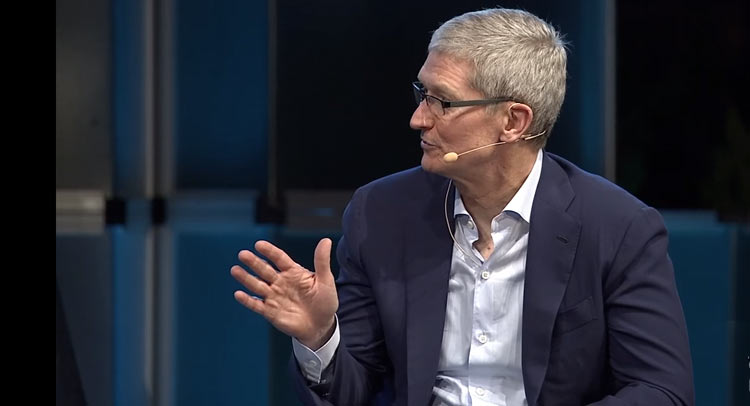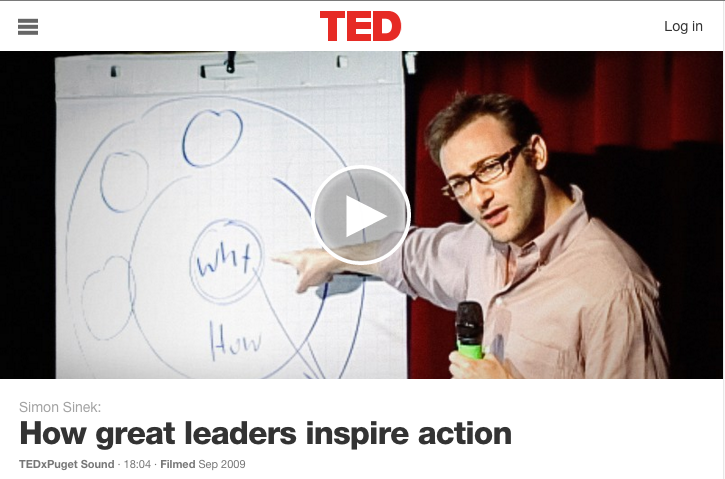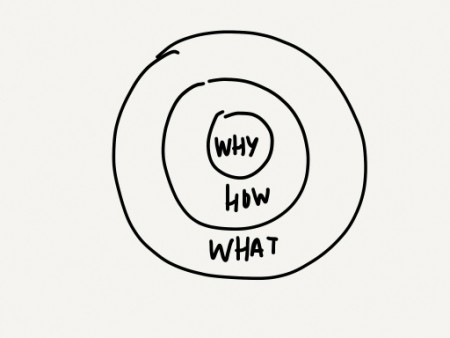The Golden Circle: How Great Leaders Inspire Action

Why is Apple so innovative?
If you watched Apple’s launch event yesterday, you might be thinking, ‘What a dumb question.’ ‘Apple didn’t unveil anything innovative.’
But of course, you’d be wrong.
The highlight of Apple’s launch event yesterday was not any of the products or lower price points ($399 iPhone, helllo).
The highlight was seeing Tim Cook address the elephant in the room right away.
[Note: This article you’re reading is not about the Apple vs. F.B.I case. It’s not about encryption, the government, or customer privacy either. This article is about how great leaders inspire action. And after seeing Tim Cook reiterate Apple’s stance on an issue that affects 1 billion people, I have no doubt Tim Cook is on his way to becoming one of the greats.]We did not expect to be in this position at odds with our own government. But we believe strongly we have a responsibility to help you protect your data and protect your privacy. We owe it to our customers, and we owe it to our country. This is an issue that impacts all of us, and we will not shrink from this responsibility. — Tim Cook at the Apple launch event March 21, 2016
So let’s answer two questions today…
What do great leaders do differently?
And how can you become a great leader even if you’re an employee?
About 10 years ago, bestselling author Simon Sinek made a profound discovery that changed his entire view on the world and how he operates in it. His discovery was this:
All the great inspiring leaders and organizations in the world, whether it’s Apple or Martin Luther King or the Wright brothers, they all think, act and communicate the exact same way. And it’s the complete opposite to everyone else. All I did was codify it, and it’s probably the world’s simplest idea. I call it the golden circle.
The Golden Circle
Simon defines The Golden Circle as follows:
Why? How? What? This little idea explains why some organizations and some leaders are able to inspire where others aren’t. Let me define the terms really quickly. Every single person, every single organization on the planet knows what they do, 100 percent. Some know how they do it, whether you call it your differentiated value proposition or your proprietary process or your USP. But very, very few people or organizations know why they do what they do. And by “why” I don’t mean “to make a profit.” That’s a result. It’s always a result. By “why,” I mean: What’s your purpose? What’s your cause? What’s your belief? Why does your organization exist? Why do you get out of bed in the morning?
BTW, these excerpts are taken from a TED talk Simon gave in 2009. I highly recommend watching.

Now we know what The Golden Circle is, let’s look at an example. In Simon’s talk he uses Apple as an example:
If Apple were like everyone else, a marketing message from them might sound like this: “We make great computers. They’re beautifully designed, simple to use and user friendly. Want to buy one?”“Meh.”That’s how most of us communicate. That’s how most marketing and sales are done, that’s how we communicate interpersonally. We say what we do, we say how we’re different or better and we expect some sort of a behavior, a purchase, a vote, something like that. Here’s our new law firm: We have the best lawyers with the biggest clients, we always perform for our clients. Here’s our new car: It gets great gas mileage, it has leather seats. Buy our car. But it’s uninspiring.
Here’s how Apple actually communicates. “Everything we do, we believe in challenging the status quo. We believe in thinking differently. The way we challenge the status quo is by making our products beautifully designed, simple to use and user friendly. We just happen to make great computers. Want to buy one?”
By now I hope I’ve got you thinking about Tim Cook’s opening statement at Apple’s launch event yesterday. It was pitch perfect. Let the pundits talk about how boring Apple’s launch event was yesterday. But don’t mistake the power of that statement — confirming everything we believe to be true about Apple as a company who challenges the status quo.
Without sounding like a total Apple fanboy, I’ll just say this: Apple is consistent. Consistent in their products, in their marketing, and most important, in their message to customers.
Remember: People don’t buy what you do; they buy why you do it.
Why Do You Get Out of Bed in the Morning?
Whether you’re the CEO of company XYZ or you’re an employee at company XYZ, if you want to become great, you need to operate under the “Start With Why” mindset.
Figure out why you get of bed in the morning.
Why do you do what you do for 8-12 hours every day?
If you really don’t know, ask your boss.
If your boss doesn’t know, it might be time to start looking for another job.
Great leaders inspire action because they attract loyal followers who share the same beliefs as they do. This greatness creates a ripple effect starting from the top-down.
If you’re a business owner, then your actions affect your manager’s actions. If you’re a manager, then your actions affect your employees work. If you’re an employee, then your work affects how your customers feel.
Choose to be great today — start with why.
Nick Papple,
Managing Editor
The Daily Brief
#NOWYOUKNOW
What Not to Say to Your Customers
“At today’s Apple event, executive Phil Schiller called people who own computers that are more than five years old “sad.” That was a silly thing to say, Phil!”
“My MacBook Pro is eight years old. That’s it right up there. Looks like a MacBook right? But then you look a little closer, and you’ll notice a few dings — a pretty normal thing for a laptop that’s almost as old as Twitter.”
Source: The Joys of Owning an Eight-Year-Old MacBook (Gizmodo).
Did someone forward you this email? Get your own copy of The Daily Brief sent straight to your inbox every weekday. Click here.
Check out what you missed in the last Daily Brief here.

